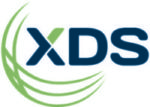The Sales and Use Tax is an essential part of Pennsylvania’s revenue profile. Not only is it the State’s second largest revenue source, it has historically played a critical role in reducing the volatility of Pennsylvania’s overall tax collections. The sales tax is also critical to the city of Philadelphia, and Allegheny County. During the current economic downturn both the revenue and structural attributes of this levy should be pushing it to the front of the tax policy line.
In short, the observation is – if revenue is going to be hard to come by for a period of time, then at least it needs to be dependable. In Pennsylvania, dependable revenue means sales and use tax revenue. It would also be helpful if revenue could be found that did not involve a rate increase or a tax base expansion.
As a result, the two topics that should rest atop Pennsylvania’s tax policy agenda should be: (1) joining the Streamlined Sales Tax initiative and (2) stemming revenue losses from automated sales suppression software (Zappers). The first initiative would yield additional revenue of $220 – $384 million (from e-commerce alone); the second effort (based on the author’s estimates) would yield additional $922 million in revenue (in the restaurant industry alone). One of the more attractive aspects of both of these efforts is that neither involves changing rates. Both provide additional revenue primarily by improving enforcement.
Read the full paper here.
